Most of us love living a healthy life, there is no doubt about that.
We go outside and browse the local markets for the finest of products that’ll help keep us energized and in shape while also keeping us healthy.
But do we know how to buy fruit in season by month?
You may have noticed that there is a big difference in the prices of your favorite vegetables and fruits depending on when you shop for them.
That’s because not every crop grows year round.
For example, something like a tomato will be at its lowest price point in the summertime when it is in season, making it a lot cheaper than other products by comparison.
Plus, you’ll notice how much better the quality of produce is when it is in season.
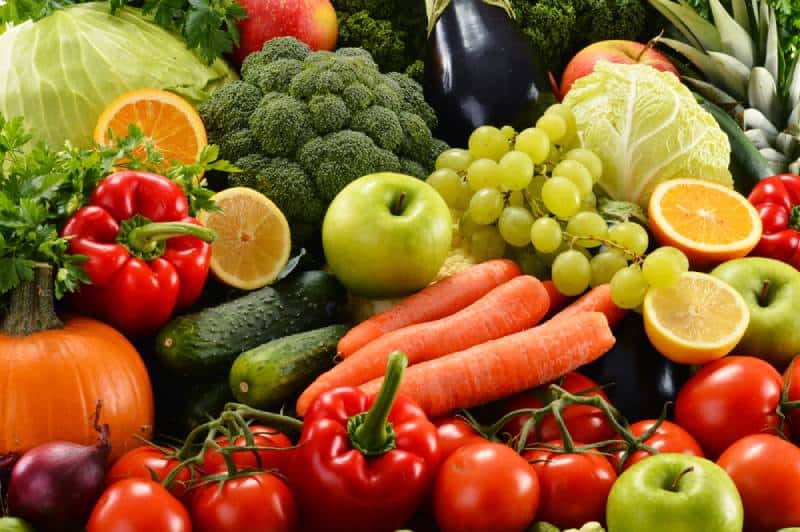
Tomatoes, as an example again, are much larger, juicier, and richer in color during those blazing summer days and they have the most wonderful taste when purchased from your local farmer’s market.
But if you were to buy them from a grocery store in say, winter, you’d notice how they’re a size smaller – like they went on a diet – and a large number of them will seem overly ripe or even outright green.
They’ll be a lot harder too, making for a more sour taste.
This is because they were either grown out of season or preserved over a long period of time.
Fruits and veggies tend to lose their sheen over time, so to speak. Not to mention, buying stuff off-season always costs more.
Most of us try to balance quality and our expenses at the same time, so what is the best way to go about buying seasonal vegetables and fruit correctly?
When and how can you know what is currently in season?
Well, hopefully this list will make it easier for you to make appropriate, seasonal fruit and veg choices.
Vegetables and fruits in season by month
With that out of the way, it’s time to provide you with a shopping list of items you should be on the lookout for on a monthly basis.
I suggest preparing your recipe books accordingly as well.
Pre-emptive planning saves you from unnecessary stress.
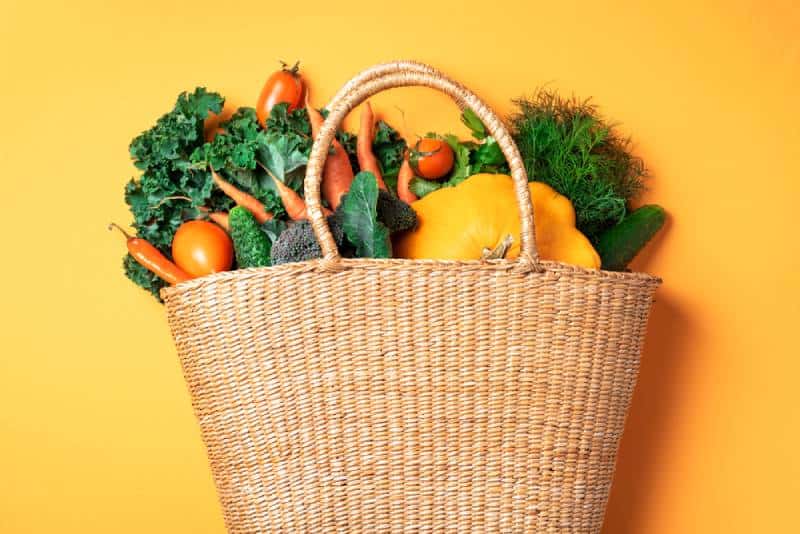
Year-rounders:
- Potatoes
- Apples
- Carrots
- Asparagus
- Corn
- Cucumbers
- Mushrooms
Thanks to our country being so large, it covers a lot of different climates, which allows for these specific products to be available to us (somewhat) fresh, year round.
Sure, your local farmers might be out of stock at certain times, but another state might be at the apex of the season for a certain veggie or fruit.
And, because it’s all grown in the US, the price jump will never be too egregious as with other imported foods, so you’re safe to include these in your meal plans year-round.
January

- Papayas
- Brussels sprouts
- Lemons
- Cabbage
- Tangerines
- Oranges
- Turnips
- Broccoli
- Grapefruit
- Cauliflower
As you can see, there are a lot of greens in the month of January as well as citrus fruits.
This makes it a perfect month to steam some veggies, maybe make the odd stew or soup here and there to warm you up during the chillier days, and prepare some freshly squeezed orange or lemon juice to keep you fresh and topped up on vitamin C.
Heck, salads are a viable option too, though they’ll pop a lot less visually than during other months.
February
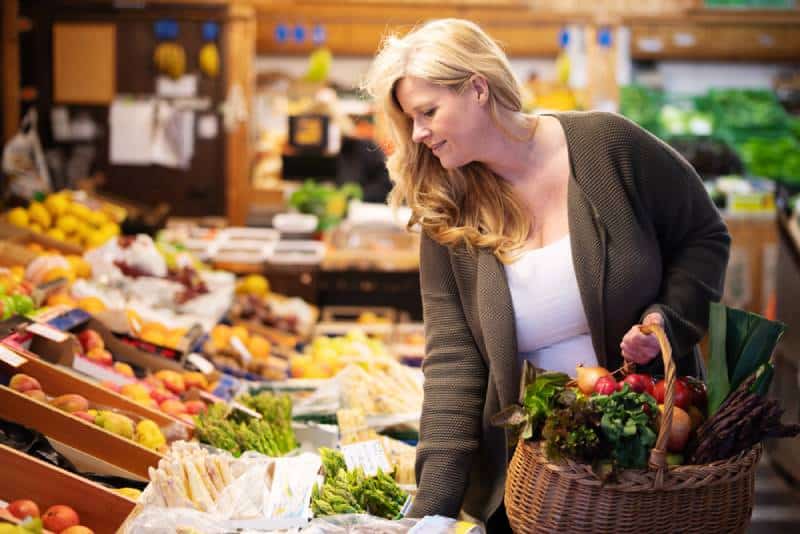
- Cabbage
- Broccoli
- Oranges
- Tangelos
- Cauliflower
- Tangerines
- Parsnips
- Leeks
- Turnips
- Lemons
- Brussels sprouts
- Kale
- Grapefruits
- Rutabagas
Now, the month of February is mostly the same as January, with the exception of everyone’s favorite superfood, kale, along with parsnips and rutabagas.
These days, kale is used in absolutely everything, from fitness smoothies to being an addition to meals, or simply as a standalone dish.
It’s no lie that it is packed with all sorts of vitamins and nutrients and should be treated as such, though I’d suggest breaking down the strong bitterness of kale with something lighter and more accented – a different sort of vegetable, perhaps.
I’d avoid using citrus fruits as the acidity combined with the bitterness can be somewhat unpleasant to most.
Experiment and see what works best for you.
As for the rest of the produce, stick to what worked in January but with the addition of the new products to enrich your meals, or even try a different take on fries by making them out of rutabaga (yes, potatoes aren’t the only fry-friendly option, oddly enough).
March
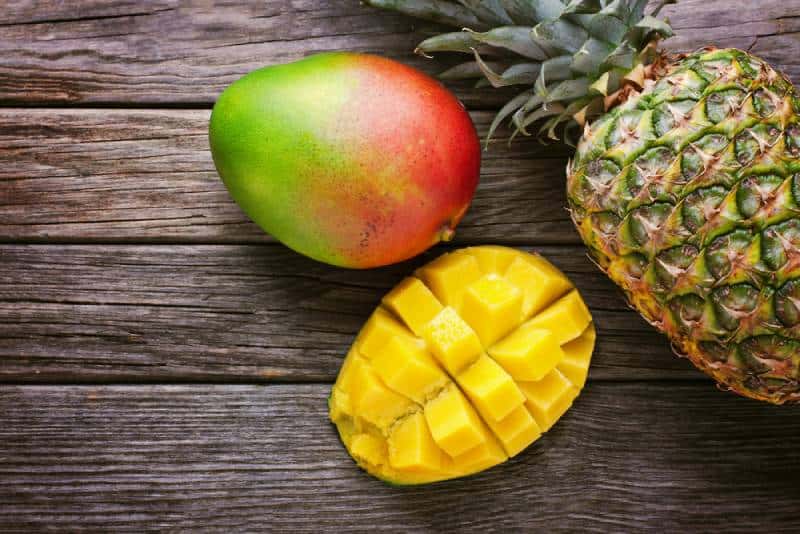
- Pineapples
- Mangoes
- Artichokes
- Broccoli
- Cauliflower
- Lettuce
The beginning of the spring season has slightly less variety than the actual winter season, but it does bring some freshness into the mix in the shape of pineapples and mangoes.
This opens our options up to fruity jams, which we can prep and conserve for use even when these fruits are out of season so we can enjoy them as tasty treats.
Now, because we’re looking at vegetables and fruit in season by month, it doesn’t mean that last month’s produce is automatically bad – you’ll find some of last month’s produce is still fresh and you can use it in your culinary endeavors.
Whether it’s as the star of a dish, in a stew or a broth, or being used as a condiment on some delicious protein like beef for the meat lovers out there where you still want to sneak in a bit of those greens and to bring color to a plate.
April

- Spring peas
- Artichokes
- Broccoli
- Cauliflower
- Rhubarb
- Leeks
- Lettuce
- Pineapples
- Radishes
April is where nature starts to show that spring is starting to bloom, as it expands our options with the addition of rhubarb and spring peas as the stars of the season.
Peas are a super healthy food and are sometimes dubbed one of the world’s healthiest due to their abundance of natural sugars and omega-3 oils.
You can eat them solo or cook them with some carrots and a bit of onion to break the starchy flavor and use them as a side dish for your main course.
Again, they are amazing with some steak or other kinds of meat.
Rhubarb on the other hand is best used in various sauces and as a side to meats, or even in sweets like ice creams.
Its unique tart flavor and lovely vibrant red color makes dishes look even more appealing.
May
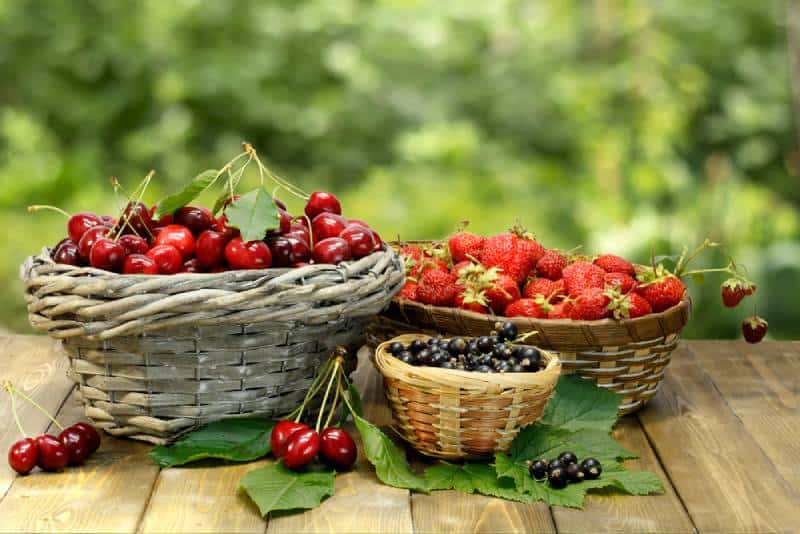
- Apricots
- Artichokes
- Asparagus
- Cherries
- Lettuce
- Mangoes
- Okra
- Pineapples
- Radishes
- Rhubarb
- Spring peas
- Strawberries
- Swiss chard
- Zucchini
This is the month where spring starts really booming, adding strong shades of red and orange to the rather green palette that has been dominant so far.
That and some much needed sweetness to our lives with strawberries and cherries.
These are fruits that don’t need much preparation and are ready to eat when freshly picked, tantalizing your tastebuds with their wonderfully sweet and fruity juices.
A refreshing delight and the best desserts after a hearty meal.
This is the period where okra comes into season as well.
We can all get stressed with allergy season being in full swing on top of our regular stressors and okra is a food that’s known to help handle stress, especially when cooked with minced lamb or beef.
It’s a veggie that even my son eats as it doesn’t have a strong flavor and has a lovely texture when bitten into compared to other similar vegetables.
June

- Apricots
- Blueberries
- Cantaloupe
- Cherries
- Kiwi
- Lettuce
- Mangoes
- Peaches
- Avocados
- Strawberries
- Swiss chard
- Watermelon
- Zucchini
Now that summer is finally kicking off we’re starting to hit that bountiful harvest period that lasts until late autumn.
We start getting tasty superfoods like Avocados, which people like to add to almost anything: smoothies, spreads, sauces, stuffing, or simply eaten as is or as part of a fruit salad with all of the other seasonal fruits like strawberries, peaches, mangoes, apricots, and blueberries.
And what’s fruit without making some jam out of it, or even a nice refreshing juice you can stick a few ice cubes in, recline in a lawn chair and enjoy the sun?
Like a DIY vacation from the comfort of your own come. A lot cheaper too.
July

- Cantaloupe
- Raspberries
- Blackberries
- Kiwi
- Tomatoes
- Lettuce
- Kohlrabi
- Cucumbers
- Zucchini
- Okra
- Swiss chard
- Blueberries
- Watermelon
- Summer squash
- Peaches
- Apricots
- Peppers
- Plums
- Green beans
- Mangoes
- Strawberries
July is the peak of diversity of taste and color that fruits and vegetables can possibly provide.
From the earthy pale green and vibrant orange of the Cantaloupe transitioning into soft peaches and apricots and the vibrant reds of tomatoes, strawberries, and watermelons, all the way to the powerful blues and purples of plums, blueberries, and blackberries.
It’s a month designed to celebrate the natural sweetness of fruits, whether served fresh or fashioned into delectable sauces, pastry fillings, juices, or anything else your mind can think of.
August

- Okra
- Zucchini
- Apricots
- Plums
- Figs
- Kohlrabi
- Mangoes
- Cantaloupe
- Tomatoes
- Winter squash
- Summer squash
- Butternut squash
- Acorn squash
- Watermelon
- Blueberries
- Swiss chard
- Apples
- Cucumbers
- Raspberries
- Kiwi
- Peaches
- Peppers
- Eggplant
- Lettuce
- Strawberries
- Green beans
August follows on from July, adding ragrant figs into the mix as well as expanding the variety of vegetables with the addition of eggplants and the ever colorful peppers as well as the huge variety of squash available.
All are fantastic for making either a wonderful broth or a zesty stir-fry, as well as for using with some of those exotic spices you’ve been saving up for when you had the freedom to create anything you wanted.
August is just such a time.
September
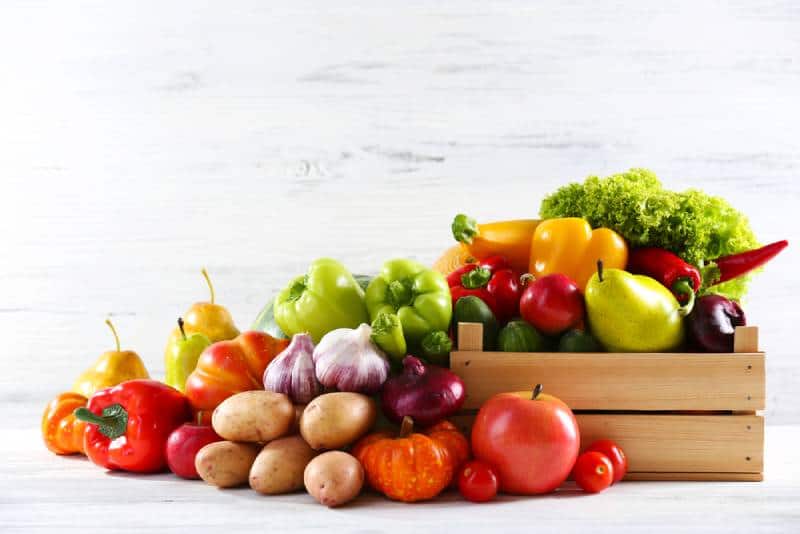
- Butternut squash
- Lettuce
- Tomatoes
- Spinach
- Cantaloupe
- Sweet potatoes
- Beets
- Figs
- Eggplant
- Persimmons
- Cauliflower
- Pumpkins
- Okra
- Pomegranates
- Acorn squash
- Green beans
- Grapes
- Swiss chard
- Mangoes
- Peppers
September carries on from August as the season slowly shifts into autumn.
The colors slowly start dying down and turning into a more dominant orange and red alongside some existing greens.
Vegetables start taking the main stage again to help expand the palette of flavor, enriching a protein like beef or pork and ensuring that no single meal tastes the same.
October

- Sweet potatoes
- Spinach
- Acorn squash
- Turnips
- Cranberries
- Lettuce
- Pomegranates
- Persimmons
- Winter squash
- Butternut squash
- Grapes
- Cabbage
- Swiss chard
- Pumpkins
- Rutabagas
- Cauliflower
- Leeks
- Beets
- Broccoli
- Brussels sprouts
- Parsnips
I believe everyone knows how October goes.
It’s the month of Thanksgiving and the kitchen will either smell of sweet potato pie, cranberry or pomegranate sauce for the turkey dinner stuffing or pumpkin, either from a starbucks coffee or when you start making pumpkin soup or preparing to carve a pumpkin for Halloween.
It’s a period where you can still taste the light bit of summer, but where slightly heavier foods start taking root to prepare us for the colder months of winter.
Autumn is also a period where mushrooms start to reign supreme, with their rich, earthy flavors making everything taste better. Just make sure to pick out the right ones.
November

- Leeks
- Beets
- Cranberries
- Pears
- Sweet potatoes
- Cabbage
- Rutabagas
- Brussels sprouts
- Tangerines
- Parsnips
- Winter squash
- Cauliflower
- Persimmons
- Pumpkins
- Turnips
- Spinach
- Pomegranates
- Broccoli
The final hurrah and the transitioning period between autumn and winter as you start to feel the cool nights creeping in and you begin to fully swap from the various seasonal fruits to soups, spinach, salads, and vegetable pies.
I do hope you’ve been making that jam because now is the right time to start cracking your reserves open to remind you of that warm feeling of summer.
Corn still plays a dominant role, whether cooked whole, turned into soup, or into polenta, or just made into popcorn for those comfy family movie nights.
December
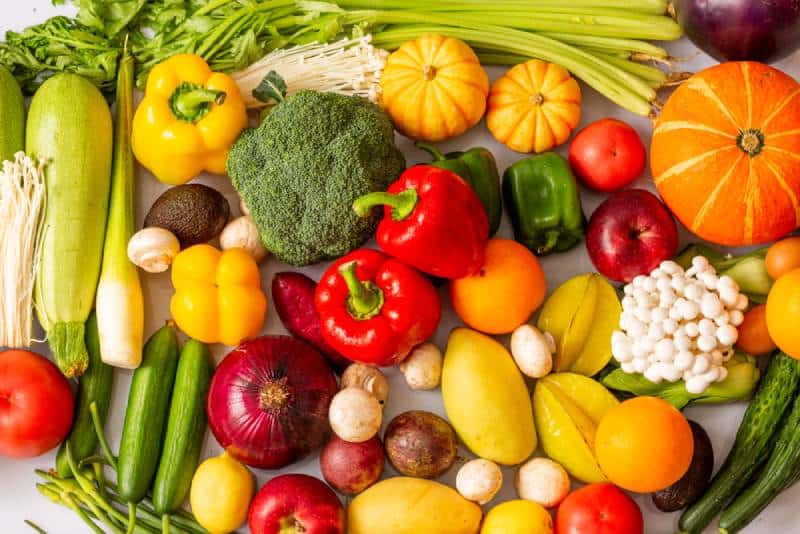
- Brussels sprouts
- Tangerines
- Sweet potatoes
- Turnips
- Cauliflower
- Pomegranates
- Broccoli
- Papayas
- Pears
- Cabbage
- Oranges
- Tangelos
- Grapefruit
- Parsnips
- Leeks
- Kale
- Rutabagas
And finally, it’s the very doorstep of winter.
We have some citrus fruits to still keep us company thanks to their durability and flexibility, but this season is mostly filled with green colors that give us that much needed iron to steel ourselves for the chilly winter days ahead.
Final Words
While this is a seasonal produce guide, it doesn’t mean that out of season produce doesn’t exist in the given month.
It doesn’t teleport away or die out at the end of their season like in some sort of video game.
It is still very much there and should be grabbed when possible if it’s still fresh, so you can spice up your recipes.
There is no distinct expiration date, but keep in mind that it will eventually go bad.
In any case, I hope this has managed to help you organize yourselves better when going shopping and provide for a better and fresher food experience in your household.
Until next time.
Like this article? Please share or pin it for later. You can also stay in the loop and follow me on Facebook, Instagram or Pinterest.

This post contains affiliate links. Please see our full disclosure for more info.

